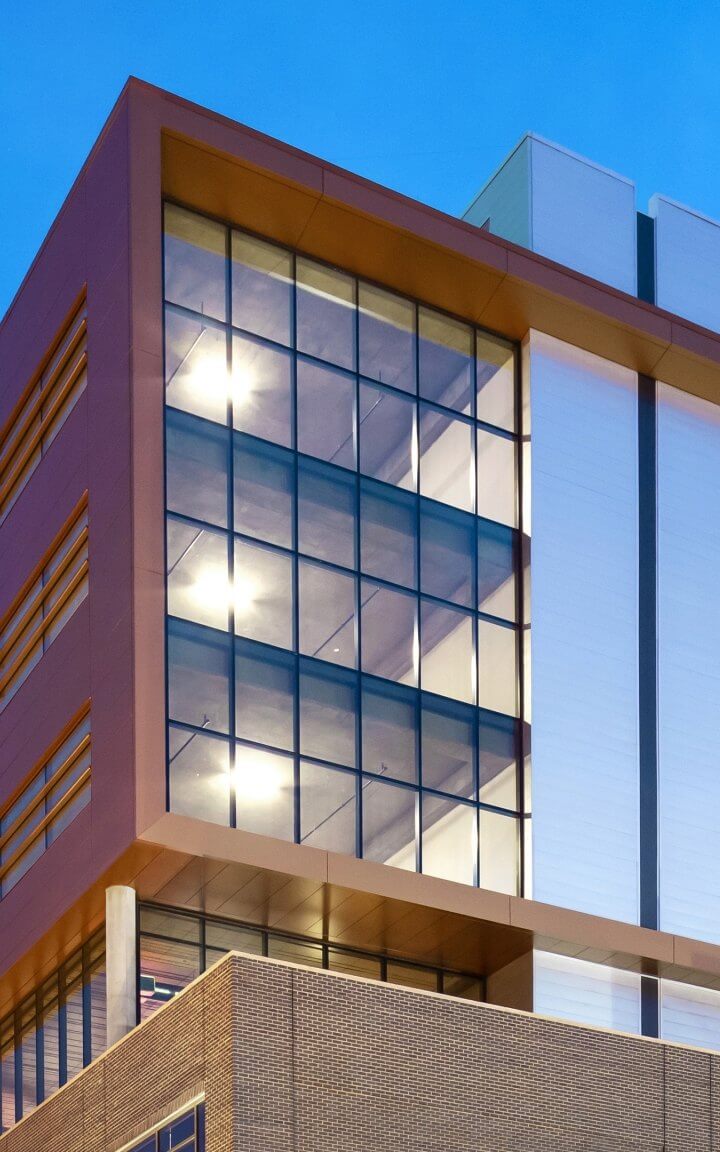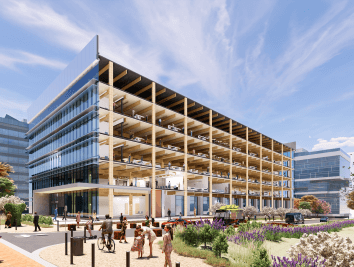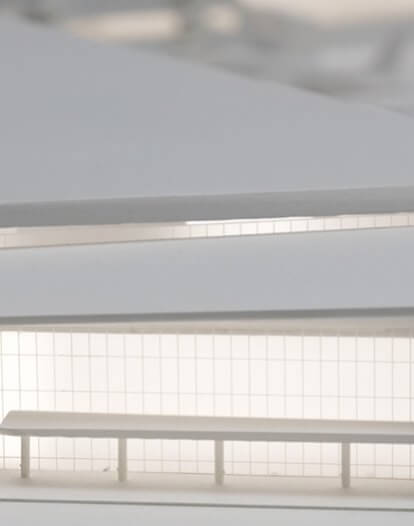Mass Timber – Understanding Biogenic Carbon Emissions

Why Is This Important?
A common belief in the AEC industry is that because trees capture carbon during their lifetime, the carbon emissions associated with the production and transportation of mass timber used in construction has already been offset, making it a carbon negative or carbon neutral material. A 2023 report titled The Global Land Squeeze: Managing the Growing Competition for Land published by the World Resources Institute (WRI) challenged this assumption, stating that there are other sources of carbon emissions in timber harvesting processes that are not accounted for. One of the key sources of these emissions referred to in the report is the management of “slash” — the unused parts of the tree that are often left in the forest with varying methods of management. This slash releases biogenic carbon back into the atmosphere which is typically omitted in the standard accounting process for the timber harvesting stage of life cycle assessment (LCA) studies.
To better understand these “hidden” biogenic carbon emissions, Corgan’s sustainability practice, Echo, and research and development practice, Hugo, undertook a research sprint focusing to identify and estimate emissions that are typically not accounted for in the harvesting of timber. The results are not surprising: while there are additional emissions associated with slash management, we found that mass timber — often referred to as MT — remains a better option than standard concrete or steel in terms of embodied carbon.
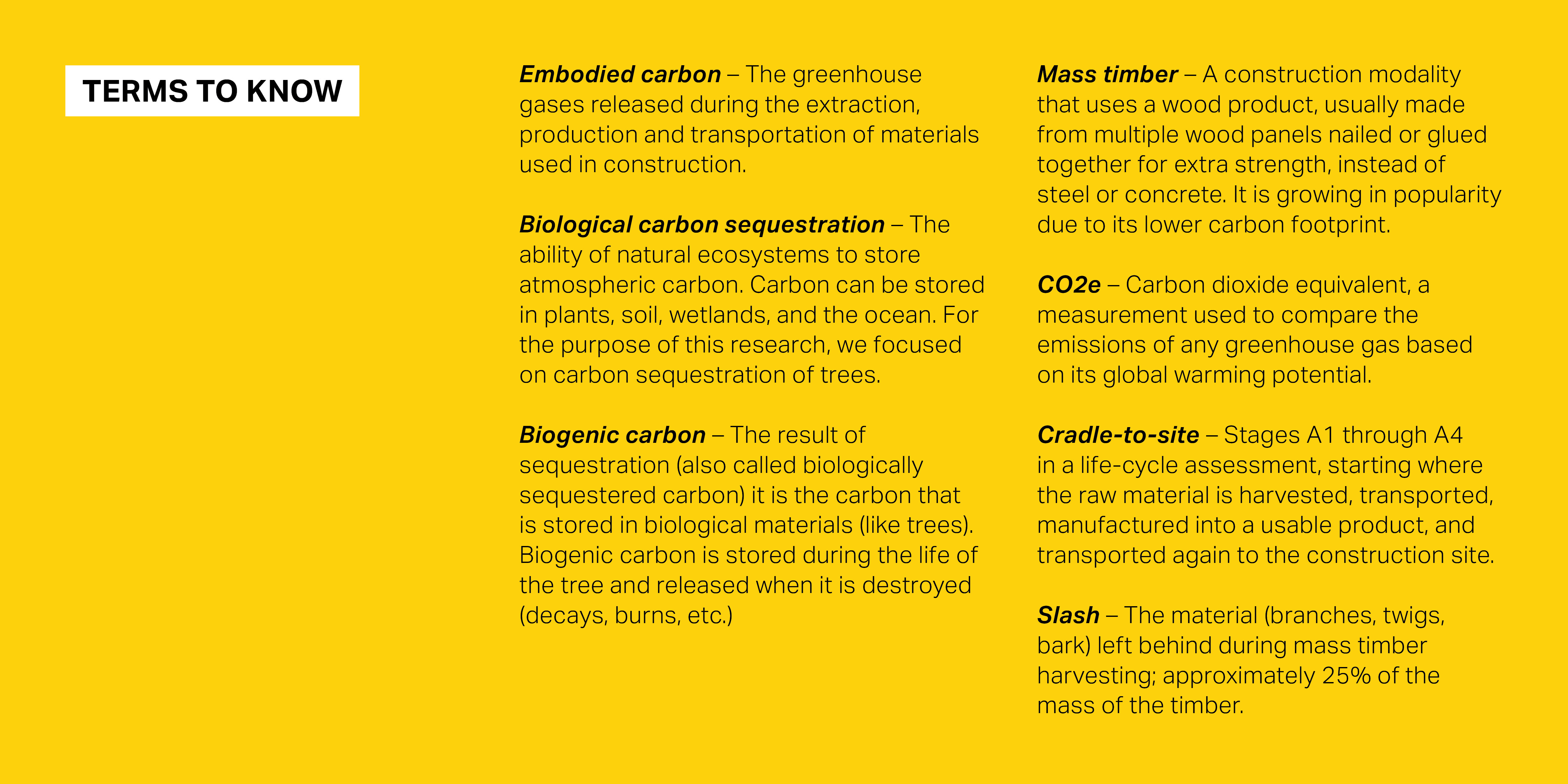
Missing the Forest for the Trees
To begin, it helps to understand what we might be missing in the timber harvesting process. During logging, it is estimated that about 25% of a tree’s biomass is lost to harvest residuals known as slash: the twigs, bark, and larger-but-unusable pieces of wood left behind after harvest. Then, in the process of sawing logs into planks, around 45% of the sawlogs are lost to wood chips and shavings. The planks are then dried, resulting in another 15% loss for shrinkage and trimming allowance. Taking all this into consideration, only 35% of what is cut down in the forest makes it to the building stage.
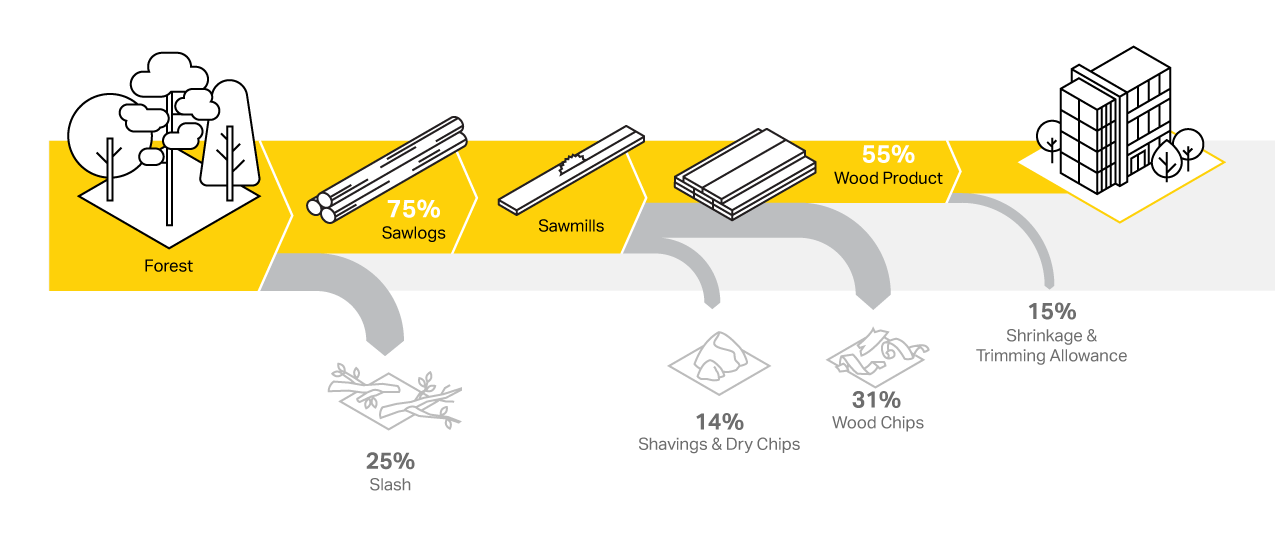
The crux of the WRI’s mass timber report is that these losses (and the biogenic carbon re-released in those losses) have not been accounted for when calculating emissions for mass timber as building construction material. Corgan’s research helps to establish more accurate CO2e emission estimates by accounting for slash-associated losses in the harvesting of mass timber, including how different slash management scenarios impact those emissions and the tree species being harvested. Once extraction stage biogenic carbon was adjusted, we also analyzed CO2e emissions from transporting mass timber from different U.S. regions to a construction site in Dallas. As expected, CO2e emissions associated with transportation increase with distance. This exercise demonstrates the impact of a designer’s selection of wood species on transportation-stage emissions and hence overall embodied carbon. Though clients often prefer specific types of wood due to their cost or appearance, designers should consider using local wood options when possible.
The Mass Timber Carbon Calculator
To better estimate the carbon emissions inherent in mass timber, we have developed a tool – Corgan’s MT Carbon Calculator – that includes assessment of CO2e emissions from slash left behind in the forest. Our tool, a dynamic carbon accounting model, is meant to be used in tandem with industry standard LCA tools like OneClick LCA. While OneClick accounts for the carbon footprint of materials from production to end-of-life, it does not account for emissions from slash which is also often omitted in environmental product declarations (EPDs). By incorporating often-overlooked emissions, along with those from manufacturing and transport, our tool provides a more comprehensive CO2e estimate.
To determine the emissions created from the slash, we needed to first establish both how much biomass was left over from the harvest. We compiled data from the USDA and The Wood Database for seven commonly used tree species, including each species’ average height, diameter, slash generated as a percent of a tree’s biomass, dried weight, and decomposition rate. That number was then used to determine how much CO2e was released for three end-of-life scenarios:
- Site Composting: Leaving all the slash and log leftovers in the environment.
- Pile Burning: Burning all the slash in a controlled environment.
- Mastication: Creating mulch and spreading them in the forest.
As a test case, we applied the MT Carbon Calculator to a Revit model of a theoretical 216,000-square-foot, six-story office building with mass timber structural elements in the columns, flooring, and framing to calculate the difference in carbon emissions for each end-of-life scenario. The results show that mastication was by far the best option – for each species and structural element, it resulted in emissions only three-to-five percent higher than current industry estimates. Pile burning, on the other hand, showed the highest carbon release — ranging from around 50-to-80 percent increase in CO2e — and site composting sat in the middle, with increases ranging from just one percent to 45% more than current industry assumptions.
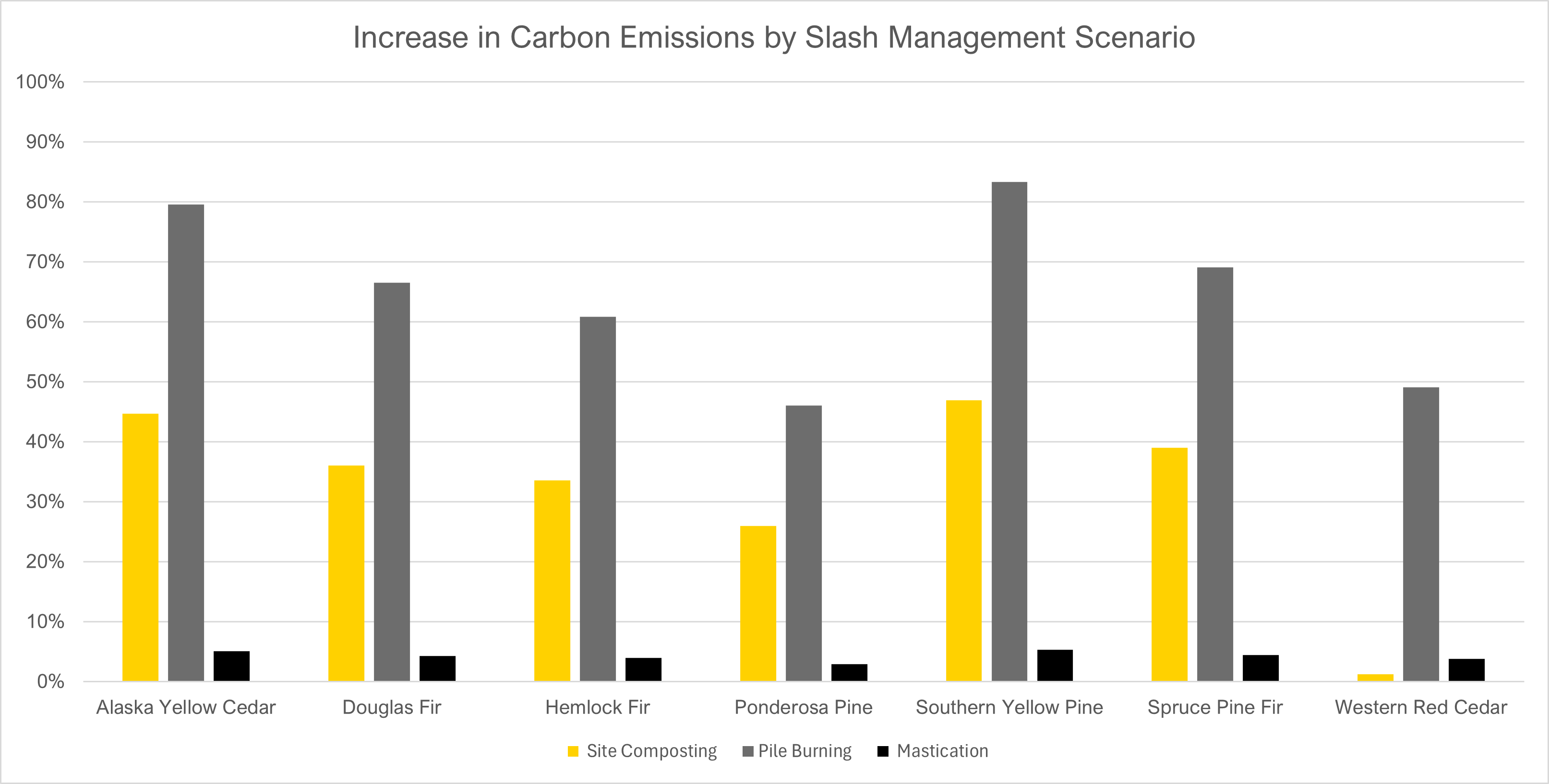
What’s Next?
While this study begins to bring into focus some biogenic carbon emissions not typically included in timber harvesting stage calculations for mass timber products, we know that more work is required to accurately account for all biogenic carbon emitted in the process of harvesting, manufacturing and transportation of mass timber. At the same time, mass timber remains an attractive material for sustainable and healthy material alternative to concrete and steel.
The efforts of Corgan’s sustainability and research teams are intended to start the dialogue on the true emissions of mass timber and provide some guidance to our industry peers in accounting for often omitted biogenic carbon. Our research paper and the tool created as an outcome of this effort are open for all to use, and we welcome feedback. We encourage designers to use the tool to assist them in making informed decisions. We are pleased to provide designers with an enhanced method of calculating omitted greenhouse gas emissions and bring the industry closer to establishing the true embodied carbon values in mass timber.
Read the full white paper here.
